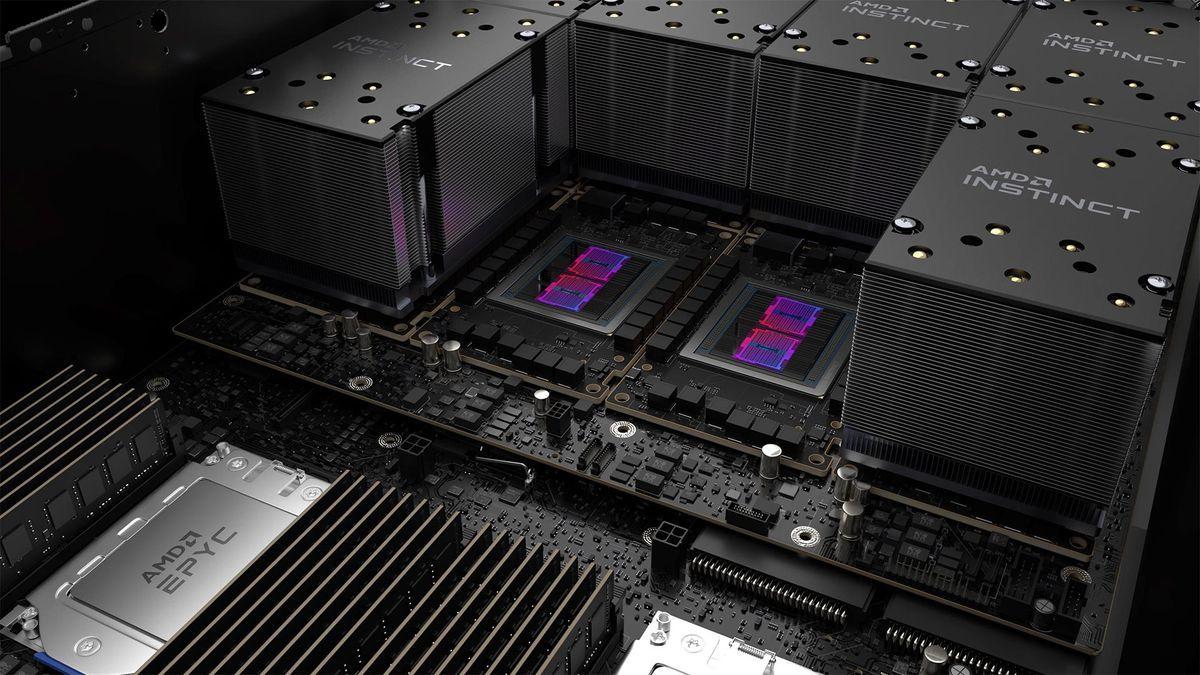AMD and DOE Forge $1 Billion Partnership for Sovereign AI Supercomputers
14 Sources
14 Sources
[1]
AMD, Department of Energy announce $1 billion AI supercomputer partnership
AMD has sealed a $1 billion deal with the US Department of Energy to develop two supercomputers, Lux and Discovery, in collaboration with Oracle and Hewlett Packard Enterprise (HPE). Both supercomputers will live at Oak Ridge National Laboratory (ORNL) in Oak Ridge, Tennessee. Lux is slated to come online fairly soon in early 2026, with Discovery following in 2029. Both build on the work that went into the Frontier supercomputer, which is also housed at ORNL and was the fastest in the world until El Capitan came online last year at Lawrence Livermore National Laboratory. AMD also helped develop those supercomputers, so this isn't its first time working with the US government on a project like this. A press release announcing the partnership describes Lux as an "AI Factory," stating: Lux at ORNL is the nation's first dedicated AI Factory for science, energy, and national security -- purpose-built to train, fine-tune, and deploy AI foundation models that will accelerate discovery and engineering innovation. Lux is designed to accelerate AI-driven science through its advanced architecture, optimized for data-intensive and model-centric workloads. Meanwhile, Discovery is described as having a "Bandwidth Everywhere" design that improves on the performance and energy efficiency the Frontier supercomputer offers, delivering more computing output at a similar cost. That processing power will support scientific research in a variety of areas, as the press release explains: Discovery will drive breakthroughs in energy, biology, advanced materials, national security, and manufacturing innovation. It will help design next-generation reactors, batteries, catalysts, semiconductors, and critical materials.
[2]
U.S. Department of Energy and AMD cut a $1 billion deal for two AI supercomputers -- pairing has already birthed the two fastest machines on the planet
Tens of billions seem to fly in all sorts of directions these days in the AI world. A "mere" $1 billion deal would arguably not even register, but the one announced today is arguably far more important than all the data centers for enabling AI chatbot sexting. According to a Reuters report, the U.S. Department of Energy (DoE) and AMD have announced a partnership for building two supercomputers at the Oak Ridge National Laboratory (ORNL) as a foundation for future nuclear fusion and medical research. The partnership has the DoE and ORNL on the blue corner, and AMD, HP, and Oracle on the other. The deal is that ORNL will host the datacenters, thus presumably providing the energy to run them, and the private companies will foot the bill for the hardware and software. When built, both sides will share the computing power. The supercomputers themselves will predictably be an all-AMD affair for the major bits of hardware. The first one is called Lux and is set to be functional within six months, with AMD Instinct MI355X accelerators, to the tune of 1400 W board power each. ORNL director Stephen Streiffer says Lux will be three times as powerful in AI over current supercomputers, while Lisa Su states it was the fastest deployment of this size of supercomputer. The second supercomputer will be called Discovery, and is pinned for a delivery in 2028 and operation kick-off come 2029. Discovery will use AMD's upcoming Instinct MI430 parts, a design with one Epyc CPU and four MI430X-HPC dies. The 430X and 450X are variations of the same design, with the former focusing on high-precision FP32 and FP64 performance, while the latter goes in the exact opposite direction and bets all its chips on FP8 and FP16. Energy Secretary Chris Wright says this project will "supercharge" research on multiple fronts and tackle "large scientific problems ranging from nuclear power to cancer treatments to national security". He seems particularly bullish on fusion energy, stating he believes that with the help of these systems, [the U.S.] will have "practical pathways to harness fusion energy in the next two or three years." He also hopes that cancer will become a manageable disease in a timeframe of five to eight years.
[3]
America's Sovereign AI supercomputers will use AMD chips
AMD is working with the US Department of Energy to build sovereign AI supercomputers at Oak Ridge National Laboratory, the agency's famous research and development center. NVIDIA describes sovereign AI as "a nation's capabilities to produce artificial intelligence using its own infrastructure, data, workforce and business networks." The company's products will power Lux and Discovery, which will be built by Hewlett Packard Enterprises and will become the DoE's flagship supercomputers under the Trump administration's AI Action Plan. AMD says the supercomputers' development is made possible by a $1 billion investment from private and public funding and that they will help researchers tackle the biggest challenges in energy, medicine, health, and national security. The Lux supercomputer will be powered by AMD Instinct MI355X GPUs, AMD EPYC CPUs and AMD Pensando advanced networking technologies. DoE plans to deploy it sometime in 2026, and AMD says that would make Lux the first US AI Factory supercomputer. Lux would fulfill the agency's immediate AI needs and will give the US "an early and decisive advantage" when it comes to deploying AI to accelerate scientific innovation. AMD is also working on the Discovery supercomputer with the same organizations, which will be powered by next-gen AMD EPYC CPUs that are codenamed "Venice." It will be equipped with AMD Instinct MI430X GPUs, a new MI400 Series accelerator made specifically for sovereign AI and high-performance computing. "The Discovery system will drive scientific innovation faster and farther than ever before," said Oak Ridge director Stephen Streiffer. They're hoping for Discovery to become operational in 2029 and expect it to produce scientific and security breakthroughs, such as how to make nuclear energy safer and cheaper.
[4]
U.S. Department of Energy forms $1 billion supercomputer and AI partnership with AMD: Reuters
The U.S. has formed a $1 billion partnership with Advanced Micro Devices to construct two supercomputers that will tackle large scientific problems ranging from nuclear power to cancer treatments to national security, Energy Secretary Chris Wright and AMD CEO Lisa Su told Reuters. The U.S. is building the two machines to ensure the country has enough supercomputers to run increasingly complex experiments that require harnessing enormous amounts of data-crunching capability. The machines can accelerate the process of making scientific discoveries in areas the U.S. is focused on. Energy Secretary Wright said the systems would "supercharge" advances in nuclear power and fusion energy, technologies for defense and national security, and the development of drugs. Scientists and companies are trying to replicate fusion, the reaction that fuels the sun, by jamming light atoms in a plasma gas under intense heat and pressure to release massive amounts of energy. "We've made great progress, but plasmas are unstable, and we need to recreate the center of the sun on Earth," Wright told Reuters. "We're going to get just massively faster progress using the computation from these AI systems that I believe will have practical pathways to harness fusion energy in the next two or three years." Wright said the supercomputers would also help manage the U.S. arsenal of nuclear weapons and accelerate drug discovery by simulating ways to treat cancer down to the molecular level. "My hope is in the next five or eight years, we will turn most cancers, many of which today are ultimate death sentences, into manageable conditions," Wright said. The plans call for the first computer called Lux to be constructed and come online within the next six months. It will be based around AMD's MI355X artificial intelligence chips, and the design will also include central processors (CPUs) and networking chips made by AMD. The system is co-developed by AMD, Hewlett Packard Enterprise, Oracle Cloud Infrastructure and Oak Ridge National Laboratory (ORNL). AMD's Su said the Lux deployment was the fastest deployment of this size of computer that she has seen. "This is the speed and agility that we wanted to [do] this for the U.S. AI efforts," Su said. ORNL Director Stephen Streiffer said the Lux supercomputer will deliver about three times the AI capacity of current supercomputers. The second, more advanced computer called Discovery will be based around AMD's MI430 series of AI chips that are tuned for high-performance computing. This system will be designed by ORNL, HPE and AMD. Discovery is expected to be delivered in 2028 and be ready for operations in 2029. Streiffer said he expected enormous gains but couldn't predict how much greater computational capability it would have. The MI430 is a special variant of its MI400 series that combines important features of traditional supercomputing chips along with the features to run AI applications, Su said. The Department of Energy will host the computers, the companies will provide the machines and capital spending, and both sides will share the computing power, a DOE official said. The two supercomputers based on AMD chips are intended to be the first of many of these types of partnerships with private industry and DOE labs across the country, the official said.
[5]
Lux and Discovery could turn Oak Ridge into a powerful AI playground
Discovery builds on Frontier's legacy with greater bandwidth and improved efficiency The US Department of Energy has announced a $1 billion collaboration with AMD to deliver two supercomputers, Lux and Discovery, at Oak Ridge National Laboratory (ORNL). AMD says the partnership will help it deliver computing platforms that advance research in energy, health, and national security, with both systems forming part of the federal effort to maintain an edge in artificial intelligence and high-performance computing. Lux, which will arrive in early 2026, and Discovery, set for 2028, are being developed alongside HPE and Oracle. "We are proud and honored to partner with the Department of Energy and Oak Ridge National Laboratory to accelerate America's foundation for science and innovation," said Dr. Lisa Su, chair and CEO, AMD. "Discovery and Lux will use AMD's high-performance and AI computing technologies to advance the most critical U.S. research priorities in science, energy, and medicine, showing the power of public-private partnership at its best." The systems will combine AMD's Instinct GPUs, EPYC CPUs, and networking hardware to expand national computing capacity and power future AI tools. The Lux AI system is described by the Department of Energy as the first dedicated US "AI factory" for science and research, used to train and fine-tune foundation models designed for areas such as biology, materials science, and clean energy. Its architecture is tailored for data-heavy workloads that cannot be handled by a regular workstation. Despite the strong technical claims, there is limited independent verification of how Lux will perform once deployed. Its co-development with cloud providers like Oracle raises questions about how much of the infrastructure will remain sovereign and under direct federal control. "Oracle will deliver sovereign, high-performance AI infrastructure that will support the co-development of the Lux AI cluster," said Mahesh Thiagarajan, executive vice president, Oracle Cloud Infrastructure. Discovery, planned as the successor to the Frontier supercomputer, will use AMD's next-generation EPYC CPUs and MI430X GPUs. "The Discovery system will drive scientific innovation faster and farther than ever before," said ORNL Director Stephen Streiffer. The project is expected to increase bandwidth and efficiency while keeping energy use steady, a goal that remains to be proven. Its backers at Oak Ridge say it will expand the DOE's ability to simulate scientific processes and design materials, reactors, and catalysts at record speed. However, large-scale AI tools require ongoing maintenance, and it is unclear whether Discovery will meet its energy and cost targets once scaled to production. "Winning the AI race requires new and creative partnerships that will bring together the brightest minds and industries American technology and science has to offer," said US Secretary of Energy Chris Wright. "That's why the Trump administration is announcing the first example of a new commonsense approach to computing partnerships with Lux. We are also announcing, as part of a competitive procurement process, Discovery. Working with AMD and HPE, we're bringing new capacity online faster than ever..."
[6]
AMD, US Energy Department Announce $1 Bn Supercomputer Partnership | AIM
Supercomputers -- Lux and Discovery -- to boost US research in AI, science, and national security. The US Energy Department (DOE) and AMD have announced a $1 billion partnership to build two supercomputers at Oak Ridge National Laboratory (ORNL). The systems, named Lux and Discovery, aim to advance AI, energy research, medicine, and national security. The Lux supercomputer will be deployed in early 2026, while Discovery will arrive in 2028 and begin user operations in 2029. Both projects are part of the US AI Action Plan, which seeks to strengthen national competitiveness and create a secure, sovereign AI infrastructure. The Lux AI supercomputer, co-developed by AMD, ORNL, Hewlett Packard Enterprise (HPE), and Oracle Cloud Infrastructure, will be the first dedicated US AI Factory for science. It will use AMD Instinct MI355X GPUs, AMD EPYC CPUs, and AMD Pensando networking technologies. According to AMD, Lux will expand the DOE's AI leadership and accelerate progress in energy, materials, medicine, and manufacturing research. "Discovery and Lux will advance the most critical US research priorities in science, energy, and medicine, demonstrating the power of public-private partnership at their best," said Lisa Su, AMD's chair and CEO. Energy Secretary Chris Wright added to this new approach to public-private collaboration, saying, "Winning the AI race requires new and creative partnerships that bring together the brightest minds and industries American science has to offer." The Discovery supercomputer will build on the capabilities of ORNL's existing systems, using AMD EPYC CPUs codenamed 'Venice' and AMD Instinct MI430X GPUs. The MI430X is designed for both high-performance computing and AI applications. ORNL Director Stephen Streiffer said Discovery will "drive scientific innovation faster and farther than ever before." It will enable large-scale simulations in energy, biology, and materials science while improving efficiency through its "Bandwidth Everywhere" design. When completed, Lux and Discovery will form the foundation of the American AI Stack, advancing US leadership in computing and research. The DOE and its partners said the systems will ensure that critical scientific breakthroughs are developed and deployed domestically.
[7]
AMD, HPE to build two new supercomputers for the Energy Department - SiliconANGLE
AMD, HPE to build two new supercomputers for the Energy Department The U.S. Energy Department has commissioned two new supercomputers based on Advanced Micro Devices Inc. silicon. Reuters reported today that the project is worth $1 billion. It will be funded with a combination of public and private sector funding. The U.S. government will reportedly share the machines' processing capacity with the private sector consortium involved in the project, which includes AMD, Hewlett Packard Enterprise Co. and Oracle Corp. AMD and HPE previously built the Energy Department's El Capitan system, which ranks as the fastest supercomputer in the world. According to a benchmark released earlier this year, it can provide 16.7 exaflops of performance for artificial intelligence workloads. One exaflop equals one million trillion computations per second. The first of the two new supercomputers that AMD and HPE are building will be known as Lux. Stephen Streiffer, the director of the Energy Department's Oak Ridge National Laboratory, told Reuters that the system will provide three times the AI performance of El Capitan. It's set to come online within six months. Lux will be based on AMD's flagship MI355X data center graphics processing unit. It features 185 billion transistors made using three- and six-nanometer manufacturing processes. The circuits are based on AMD's latest CDNA 4 GPU architecture. AI models keep the information they process in units of data called floating point numbers. There are multiple floating point number formats that range in size from 4 to 32 bits. Large floating point numbers represent data with a high degree of accuracy, but take relatively long to process. Small floating points trade off some accuracy for faster processing. Compared with its predecessor, AMD's CDNA 4 architecture provides better support for AI workloads that use multiple floating point number formats. It's also better at running GEMM calculations. Those are linear algebra operations that AI models use to crunch data. In addition to the MI355X, Lux will reportedly include central processing units and networking chips from AMD. Those networking chips might be data processing units from the company's Pensando product series. In addition to processing network traffic, AMD's Pensando DPUs offload tasks such as data encryption from servers to leave more computing capacity for applications. Lux is expected to run workloads related to nuclear energy, national security and medical research. In the latter field, scientists reportedly plan to explore new cancer treatment methods by simulating them "down to the molecular level." They also intend to deploy foundation models on the system to automate manual research tasks. Lux will be joined by a second, more capable system called Discovery in 2028. It will be based on a planned successor to the MI355X known as the MI430. The chip is expected to combine features of supercomputer processors with AI capabilities. Both Lux and Discover will be hosted by the Oak Ridge National Laboratory. The latter system will replace the facility's current flagship supercomputer, a machine called Frontier that is likewise powered by AMD chips. Discovery will be backwards compatible with Frontier to make it simple for researchers to move over their workloads. Reuters reported that officials hope to follow up the projects with "many" similar partnerships between Energy Department labs and the private sector.
[8]
America is building two AMD-powered supercomputers to recreate the sun and fight disease
The U.S. Department of Energy has struck a $1 billion deal with Advanced Micro Systems (AMD) to build two supercomputers that have unprecedented power to supercharge scientific advances ranging from nuclear power to developing cancer treatments. The partnership, first reported by Reuters on Monday, will ensure the U.S. government has the necessary computing power to accommodate enormous amounts of data -- and could deliver about three times the AI capacity of current supercomputers. The artificial intelligence-powered supercomputers could be deployed for advancing nuclear power and replicate fusion -- the process that fuels the sun and creates massive amounts of energy. "We're going to get just massively faster progress using the computation from these AI systems that I believe will have practical pathways to harness fusion energy in the next two or three years," Energy Secretary Chris Wright told Reuters. Shares of AMD rose nearly 1% in mid-day trading on Monday. The semiconductor maker's stock has more-than doubled in value this year, and the company recently forged a partnership to supply its chips to OpenAI to build out AI infrastructure.
[9]
AMD and US Energy Department launch $1B supercomputer project
The $1B AMD-DOE collaboration will create Lux and Discovery, next-gen AI supercomputers set to boost breakthroughs in energy, science, and national security. AMD and the U.S. Department of Energy announced a $1 billion partnership to develop two supercomputers, Lux and Discovery, at Oak Ridge National Laboratory in Oak Ridge, Tennessee. The initiative, involving collaboration with Oracle and Hewlett Packard Enterprise, aims to advance AI-driven scientific research using AMD-powered systems. The supercomputers draw from the architecture of the Frontier supercomputer, located at the same laboratory. Frontier held the title of the world's fastest supercomputer until El Capitan became operational last year at Lawrence Livermore National Laboratory. AMD contributed to the development of both Frontier and El Capitan through prior partnerships with the U.S. government. This new project extends those efforts by integrating AMD chips into the designs of Lux and Discovery. Lux will enter service in early 2026, positioning it as an early deployment in the partnership's timeline. A press release from the announcement characterizes Lux in specific terms: "Lux at ORNL is the nation's first dedicated AI Factory for science, energy, and national security -- purpose-built to train, fine-tune, and deploy AI foundation models that will accelerate discovery and engineering innovation." The system incorporates an advanced architecture tailored for data-intensive and model-centric workloads. This optimization enables Lux to handle the computational demands of AI applications in scientific contexts. Discovery follows with an operational date in 2029. Its design introduces a "Bandwidth Everywhere" approach that enhances performance and energy efficiency compared to Frontier. This configuration achieves greater computing output while maintaining costs at a level similar to the earlier system. The press release details the intended applications: "Discovery will drive breakthroughs in energy, biology, advanced materials, national security, and manufacturing innovation. It will help design next-generation reactors, batteries, catalysts, semiconductors, and critical materials." These capabilities address key challenges in developing advanced technologies across multiple sectors. The partnership underscores ongoing investments in high-performance computing infrastructure. Oak Ridge National Laboratory serves as the host site, leveraging its established role in supercomputing projects. Collaborators Oracle and Hewlett Packard Enterprise provide additional expertise in system integration and hardware deployment. The combined resources support the U.S. Department of Energy's objectives in computational science.
[10]
AMD inks huge deal with US government to power next-gen AI supercomputers with AMD AI hardware
TL;DR: AMD partners with the US Department of Energy to develop Lux and Discovery supercomputers, combining $1 billion in funding to advance sovereign AI and scientific research. Featuring AMD Instinct GPUs, EPYC CPUs, and cutting-edge networking, these systems enhance US leadership in high-performance computing, AI, and national security. AMD has just inked a deal with the US Department of Energy (DoE) on two new supercomputer projects using AMD hardware. AMD will be building out two new supercomputers -- the Lux and Discovery supercomputers -- for the US DoE that will be used mostly for academic purposes. In a press release, AMD explained that when fully deployed, the new Lux and Discovery supercomputers will represent a combined $1 billion investment of private and public funding, enabling the DoE to build a secure, federated and standards-based infrastructure for sovereign US-based AI and science. The new Lux AI supercomputer is co-developed between AMD, ORNL, Oracle Cloud Infrastructure (OCI) and HPE, powered by AMD Instinct MI355X AI GPUs, AMD EPYC CPUs, and AMD Pensando advanced networking technologies. The new Discovery AI supercomputer deepens the collaboration between DoE, ORNL, HPE, and AMD with next-gen AMD "Venice" GPUs, and AMD Instinct MI430X GPUs -- a new MI400 series AI accelerator engineered specifically for sovereign AI and scientific computing. Dr. Lisa Su, chair and CEO, AMD, said: "We are proud and honored to partner with the Department of Energy and Oak Ridge National Laboratory to accelerate America's foundation for science and innovation. Discovery and Lux will leverage AMD's high-performance and AI computing technologies to advance the most critical U.S. research priorities in science, energy, and medicine - demonstrating the power of public-private partnership at their best". U.S. Secretary of Energy Chris Wright, said: "Winning the AI race requires new and creative partnerships that will bring together the brightest minds and industries American technology and science has to offer. That's why the Trump administration is announcing the first example of a new commonsense approach to computing partnerships with Lux. We are also announcing, as part of a competitive procurement process, Discovery. Working with AMD and HPE, we're bringing new capacity online faster than ever before, turning shared innovation into national strength, and proving that America leads when private-public partners build together". ORNL Director Stephen Streiffer, added: "The Discovery system will drive scientific innovation faster and farther than ever before. ORNL's leadership in supercomputing has dramatically shortened researchers' time from problem to solution across a host of fields and industries. With Discovery, the integration of high-performance computing and AI promises breakthroughs at the accelerated speed and scale necessary for continued U.S. leadership in an increasingly competitive global environment". Antonio Neri, president and CEO at HPE, said: "We are proud that the partnership between HPE and AMD is at the forefront of advancing the next generation of supercomputing in the AI era for Oak Ridge National Laboratory. HPE's newest supercomputing solutions harness converged AI and HPC architectures, enabling the lab to achieve unprecedented productivity and scale. This collaboration also reinforces American leadership in applying AI to science, energy and national security". Mahesh Thiagarajan, executive vice president, Oracle Cloud Infrastructure, added: "Oracle is honored to work alongside the Department of Energy to help drive breakthroughs in science, energy, and national security. Oracle will deliver sovereign, high-performance AI infrastructure that will support the co-development of the Lux AI cluster".
[11]
Exclusive-US Department of Energy Forms $1 Billion Supercomputer and AI Partnership With AMD
By Timothy Gardner and Max A. Cherney WASHINGTON/SAN FRANCISCO (Reuters) -The U.S. has formed a $1 billion partnership with Advanced Micro Devices to construct two supercomputers that will tackle large scientific problems ranging from nuclear power to cancer treatments to national security, Energy Secretary Chris Wright and AMD CEO Lisa Su told Reuters. The U.S. is building the two machines to ensure the country has enough supercomputers to run increasingly complex experiments that require harnessing enormous amounts of data-crunching capability. The machines can accelerate the process of making scientific discoveries in areas the U.S. is focused on. Energy Secretary Wright said the systems would "supercharge" advances in nuclear power and fusion energy, technologies for defense and national security, and the development of drugs. Scientists and companies are trying to replicate fusion, the reaction that fuels the sun, by jamming light atoms in a plasma gas under intense heat and pressure to release massive amounts of energy. "We've made great progress, but plasmas are unstable, and we need to recreate the center of the sun on Earth," Wright told Reuters. "We're going to get just massively faster progress using the computation from these AI systems that I believe will have practical pathways to harness fusion energy in the next two or three years." Wright said the supercomputers would also help manage the U.S. arsenal of nuclear weapons and accelerate drug discovery by simulating ways to treat cancer down to the molecular level. "My hope is in the next five or eight years, we will turn most cancers, many of which today are ultimate death sentences, into manageable conditions," Wright said. The plans call for the first computer called Lux to be constructed and come online within the next six months. It will be based around AMD's MI355X artificial intelligence chips, and the design will also include central processors (CPUs) and networking chips made by AMD. The system is co-developed by AMD, Hewlett Packard Enterprise, Oracle Cloud Infrastructure and Oak Ridge National Laboratory (ORNL). AMD's Su said the Lux deployment was the fastest deployment of this size of computer that she has seen. "This is the speed and agility that we wanted to (do) this for the U.S. AI efforts," Su said. ORNL Director Stephen Streiffer said the Lux supercomputer will deliver about three times the AI capacity of current supercomputers. The second, more advanced computer called Discovery will be based around AMD's MI430 series of AI chips that are tuned for high-performance computing. This system will be designed by ORNL, HPE and AMD. Discovery is expected to be delivered in 2028 and be ready for operations in 2029. Streiffer said he expected enormous gains but couldn't predict how much greater computational capability it would have. The MI430 is a special variant of its MI400 series that combines important features of traditional supercomputing chips along with the features to run AI applications, Su said. The Department of Energy will host the computers, the companies will provide the machines and capital spending, and both sides will share the computing power, a DOE official said. The two supercomputers based on AMD chips are intended to be the first of many of these types of partnerships with private industry and DOE labs across the country, the official said. (Reporting by Max A. Cherney in San Francisco; Editing by Tom Hogue)
[12]
AMD Lands Major U.S. Government AI Deal to Power Next-Gen Supercomputers, Featuring Instinct MI355X & the Newer MI430 AI Chips
The U.S. Department of Energy (DoE) has reportedly collaborated with AMD on two new supercomputer projects, utilizing Team Red's latest AI chips to address scientific challenges. Based on a new report from Reuters, it seems like AMD has managed to secure a massive partnership with the U.S. DoE, which involves the construction of two new supercomputers, mainly for academic purposes. This marks a major deal for Team Red, which is currently in pursuit of having its tech stack widely adopted by customers in the industry, providing a significant challenge to NVIDIA. The report claims that the supercomputers will utilize AMD's Instinct MI355X AI chips, as well as a new MI430 variant, which we'll discuss later. Now, in terms of the supercomputer build-out, it is claimed that the first project, called "Lux", will come online in the next six months and will employ Team Red's latest MI355X AI chips. The system will involve partners like HP, Oracle, and Oak Ridge National Laboratory (ORNL), and the deployment of Lux comes at a record time, according to CEO Lisa Su. The second supercomputer will be called "Discovery", which is expected to be delivered by 2028, featuring a custom Instinct MI430 AI chip variant designed for high-performance computing. Interestingly, Project Discovery has been under consideration by the DoE since last year, and it appears that AMD has been chosen as the primary computing provider. The Department of Energy will finance projects worth almost $1 billion, and it is claimed that the DoE is also seeking further private partnerships to scale up the division's computing capabilities. If you are curious about why AMD has been adopted here, instead of NVIDIA, well, the report doesn't disclose a specific reason, but a suitable bet would be how the administration is more experienced with AMD's tech stack on the HPC-level, and since supercomputers like the Frontier have been under use by the DoE, opting for AMD makes sense this way. Of course, DoE is expanding its collaboration with the public sector; hence, we could see NVIDIA's AI hardware being adopted as well in the future. However, by the looks of it, AMD is the preferred choice for now.
[13]
The United States teams up with AMD to build two next-generation AI supercomputers
The US Department of Energy has entered into a $1bn partnership with AMD to design two supercomputers to advance scientific research and national security. These systems, among the most powerful ever built, will be used for nuclear fusion modeling, cancer treatment development, energy research, and management of the US nuclear arsenal. According to Energy Secretary Chris Wright, these machines will significantly accelerate work on fusion and precision medicine, two strategic priorities for the United States. The first supercomputer, called Lux, will be deployed within six months and will be based on AMD's MI355X artificial intelligence chips, combined with its central processors and network chips. Developed in collaboration with Hewlett Packard Enterprise, Oracle Cloud Infrastructure, and Oak Ridge National Laboratory (ORNL), Lux will offer approximately three times the computing capacity of current systems. AMD CEO Lisa Su hailed the deployment as "record-breaking" for a project of this scale, symbolizing the rise of American AI. The second supercomputer, Discovery, scheduled to go into service in 2029, will be designed around MI430 chips, optimized for artificial intelligence and high-performance computing applications. This even more powerful system will be developed jointly by AMD, Hewlett Packard Enterprise, Oracle, and ORNL. The Department of Energy will host both supercomputers, while industrial partners will provide the equipment and investment. This partnership marks a new phase of cooperation between the US government and the private sector to strengthen national scientific computing infrastructure and consolidate the United States' position in the global race for computing power.
[14]
US Department of Energy forms $1 billion supercomputer and AI partnership with AMD
WASHINGTON/SAN FRANCISCO (Reuters) -The U.S. has formed a $1 billion partnership with Advanced Micro Devices to construct two supercomputers that will tackle large scientific problems ranging from nuclear power to cancer treatments to national security, Energy Secretary Chris Wright and AMD CEO Lisa Su told Reuters. The U.S. is building the two machines to ensure the country has enough supercomputers to run increasingly complex experiments that require harnessing enormous amounts of data-crunching capability. The machines can accelerate the process of making scientific discoveries in areas the U.S. is focused on. Energy Secretary Wright said the systems would "supercharge" advances in nuclear power and fusion energy, technologies for defense and national security, and the development of drugs. Scientists and companies are trying to replicate fusion, the reaction that fuels the sun, by jamming light atoms in a plasma gas under intense heat and pressure to release massive amounts of energy. "We've made great progress, but plasmas are unstable, and we need to recreate the center of the sun on Earth," Wright told Reuters. "We're going to get just massively faster progress using the computation from these AI systems that I believe will have practical pathways to harness fusion energy in the next two or three years." Wright said the supercomputers would also help manage the U.S. arsenal of nuclear weapons and accelerate drug discovery by simulating ways to treat cancer down to the molecular level. "My hope is in the next five or eight years, we will turn most cancers, many of which today are ultimate death sentences, into manageable conditions," Wright said. The plans call for the first computer called Lux to be constructed and come online within the next six months. It will be based around AMD's MI355X artificial intelligence chips, and the design will also include central processors (CPUs) and networking chips made by AMD. The system is co-developed by AMD, Hewlett Packard Enterprise, Oracle Cloud Infrastructure and Oak Ridge National Laboratory (ORNL). AMD's Su said the Lux deployment was the fastest deployment of this size of computer that she has seen. "This is the speed and agility that we wanted to (do) this for the U.S. AI efforts," Su said. ORNL Director Stephen Streiffer said the Lux supercomputer will deliver about three times the AI capacity of current supercomputers. The second, more advanced computer called Discovery will be based around AMD's MI430 series of AI chips that are tuned for high-performance computing. This system will be designed by ORNL, HPE and AMD. Discovery is expected to be delivered in 2028 and be ready for operations in 2029. Streiffer said he expected enormous gains but couldn't predict how much greater computational capability it would have. The MI430 is a special variant of its MI400 series that combines important features of traditional supercomputing chips along with the features to run AI applications, Su said. The Department of Energy will host the computers, the companies will provide the machines and capital spending, and both sides will share the computing power, a DOE official said. The two supercomputers based on AMD chips are intended to be the first of many of these types of partnerships with private industry and DOE labs across the country, the official said. (Reporting by Max A. Cherney in San Francisco; Editing by Tom Hogue)
Share
Share
Copy Link
The US Department of Energy partners with AMD to build two cutting-edge supercomputers, Lux and Discovery, at Oak Ridge National Laboratory. This $1 billion initiative aims to advance AI-driven scientific research in nuclear fusion, cancer treatment, and national security.
Historic Partnership for AI Supremacy
The United States Department of Energy has announced a groundbreaking $1 billion partnership with Advanced Micro Devices to develop two state-of-the-art supercomputers at Oak Ridge National Laboratory in Tennessee.
1
This collaboration, involving Oracle and Hewlett Packard Enterprise, represents a significant investment in America's sovereign AI capabilities and scientific research infrastructure.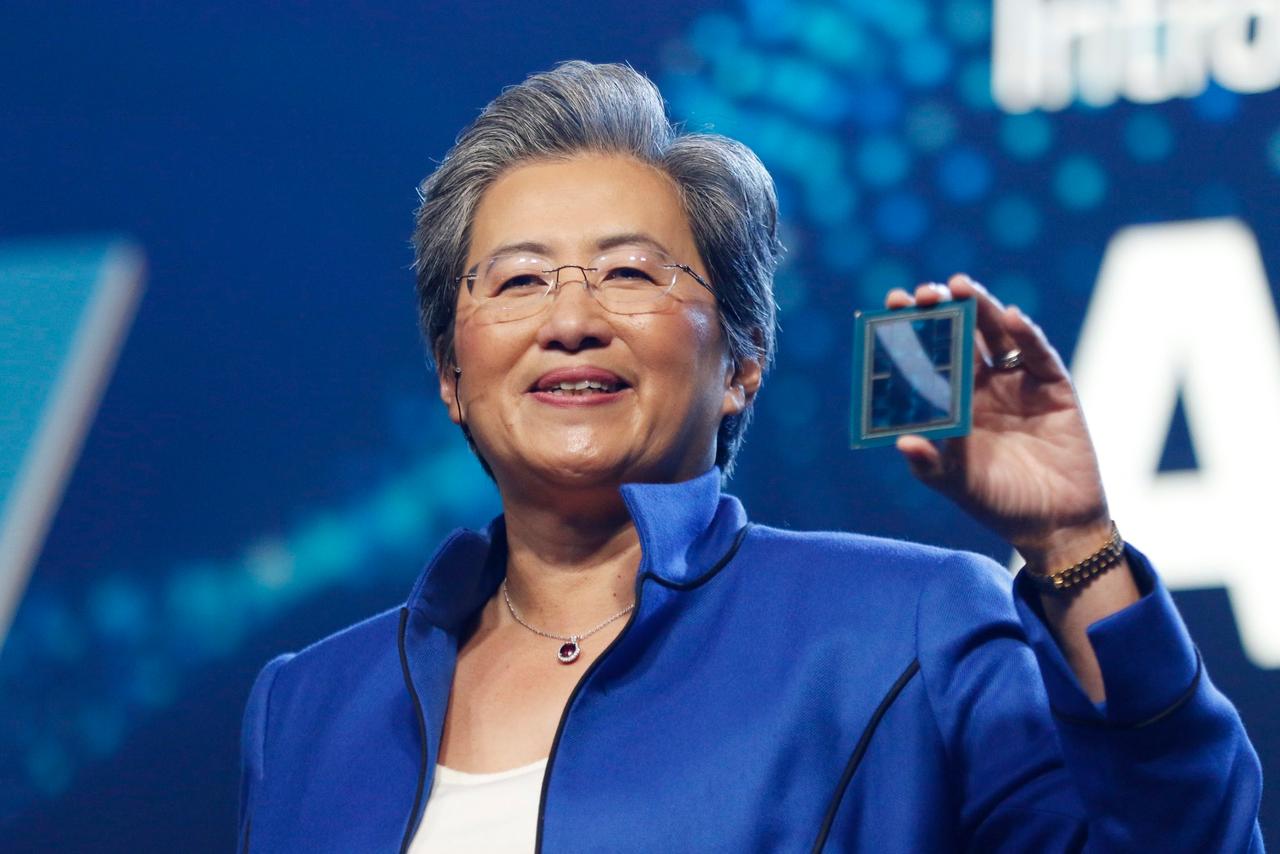
Source: Wccftech
The partnership builds on AMD's proven track record in supercomputing, having previously contributed to the development of the Frontier supercomputer, which held the title of world's fastest until El Capitan came online at Lawrence Livermore National Laboratory.
1
Lux: America's First AI Factory
The first supercomputer, named Lux, is scheduled to become operational in early 2026 and represents a revolutionary approach to scientific computing.
3
Described as the nation's first dedicated "AI Factory" for science, energy, and national security, Lux is purpose-built to train, fine-tune, and deploy AI foundation models that will accelerate discovery and engineering innovation.Lux will be powered by AMD Instinct MI355X GPUs, each consuming 1,400 watts of board power, alongside AMD EPYC CPUs and AMD Pensando advanced networking technologies.
2
Oak Ridge National Laboratory Director Stephen Streiffer indicates that Lux will deliver approximately three times the AI capacity of current supercomputers.4
AMD CEO Lisa Su emphasized the unprecedented speed of deployment, calling it "the fastest deployment of this size of supercomputer" she has witnessed, demonstrating the urgency behind America's AI initiatives.
4
Discovery: Next-Generation Scientific Computing
The second supercomputer, Discovery, is slated for delivery in 2028 with operations beginning in 2029.
4
This system will utilize AMD's next-generation EPYC CPUs codenamed "Venice" and the new AMD Instinct MI430X GPUs, specifically designed for sovereign AI and high-performance computing applications.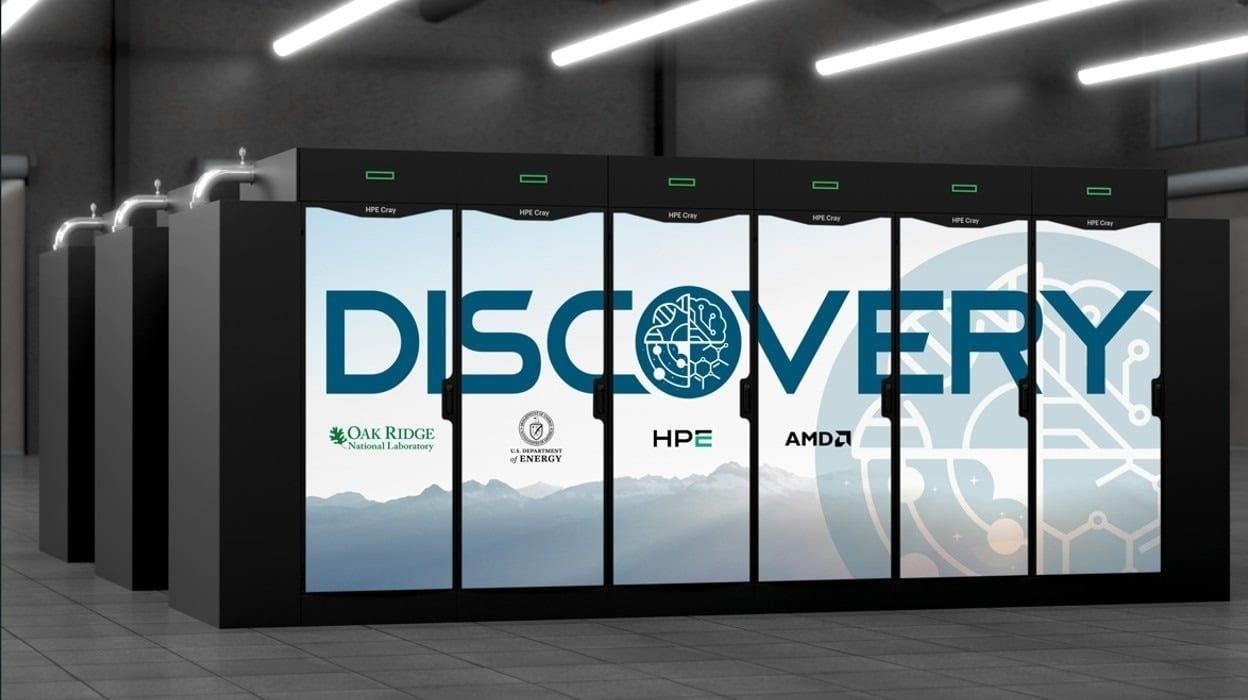
Source: TweakTown
Discovery features a "Bandwidth Everywhere" design that improves upon the performance and energy efficiency of the current Frontier supercomputer, delivering enhanced computing output at similar operational costs.
1
The MI430X represents a specialized variant that combines traditional supercomputing capabilities with AI application features, optimized for high-precision FP32 and FP64 performance.2
Related Stories
Revolutionary Research Applications
Energy Secretary Chris Wright outlined ambitious goals for these supercomputers, particularly in nuclear fusion research. He expressed confidence that these systems will enable "practical pathways to harness fusion energy in the next two or three years," addressing the challenge of recreating solar conditions on Earth to achieve controlled fusion reactions.
4
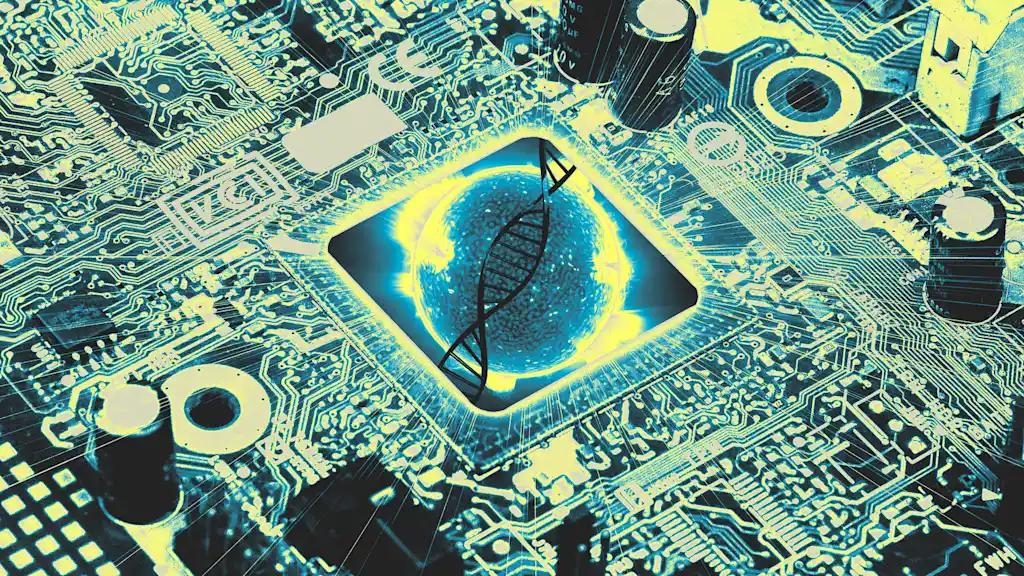
Source: Fast Company
In medical research, Wright anticipates transformative advances in cancer treatment, stating his hope that "in the next five or eight years, we will turn most cancers, many of which today are ultimate death sentences, into manageable conditions."
4
The supercomputers will enable molecular-level simulation of cancer treatments, potentially revolutionizing drug discovery processes.Both systems will support critical research across multiple domains, including next-generation reactor design, advanced battery development, catalyst optimization, semiconductor innovation, and critical materials research. Additionally, they will contribute to national security efforts, including the management of America's nuclear weapons arsenal.
Strategic Partnership Model
The collaboration represents an innovative public-private partnership structure where the Department of Energy provides hosting facilities and energy infrastructure, while private companies supply hardware, software, and capital investment.
4
Both parties will share access to the computing power, maximizing the return on investment for taxpayers while leveraging private sector expertise and resources.This partnership model is intended as the first of many similar collaborations between private industry and DOE laboratories across the country, potentially reshaping how America approaches large-scale scientific computing infrastructure.
4
References
Summarized by
Navi
[2]
[4]
Related Stories
US National Labs Launch Massive AI Supercomputing Initiative to Maintain Global Technological Leadership
26 Nov 2025•Technology

Doudna Supercomputer: Dell and Nvidia Join Forces with DOE for Next-Gen AI-Powered Scientific Discovery
30 May 2025•Technology
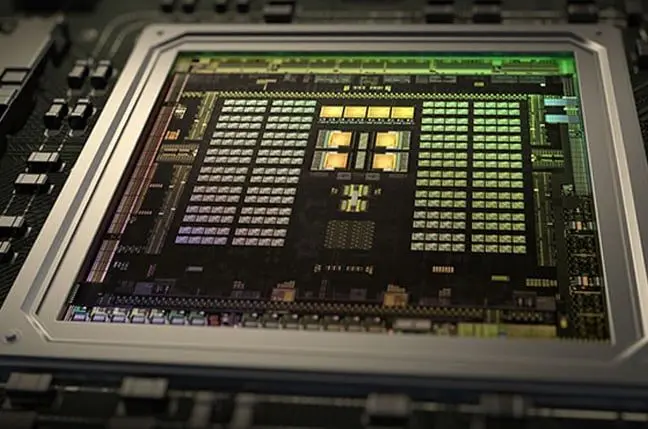
AMD Dominates Top500 Supercomputer Rankings with El Capitan and Frontier
11 Jun 2025•Technology
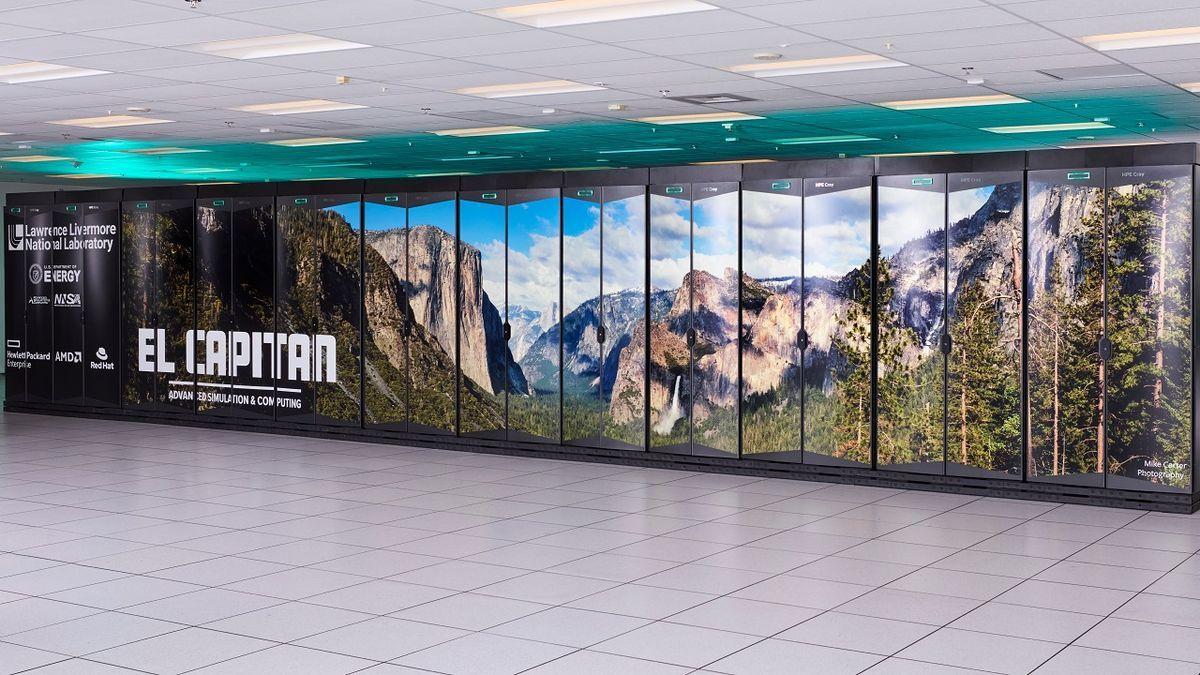
Recent Highlights
1
OpenAI releases GPT-5.2 AI model after code red memo targets Google's Gemini 3 threat
Technology

2
Disney invests $1 billion in OpenAI, licenses 200+ characters for Sora video generator
Technology

3
Disney accuses Google of massive copyright infringement through AI-generated character images
Policy and Regulation

